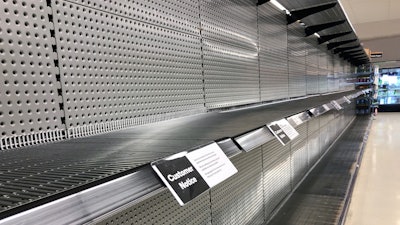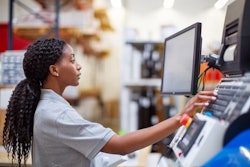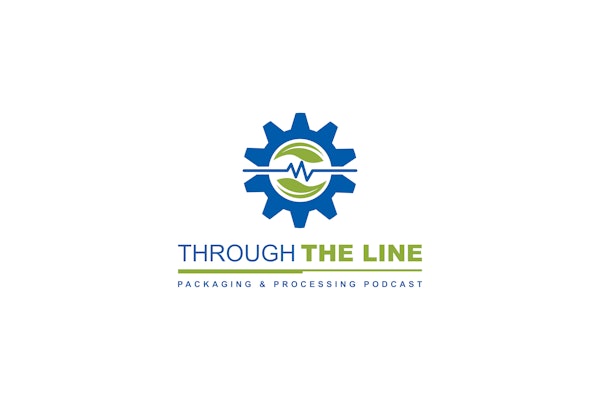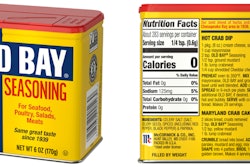In a March 26-31 survey, we asked Packaging World readers—highly targeted CPG and food, beverage, and personal products manufacturers—what their top challenge was in facing down the COVID-19 crisis. I received 105 qualified answers and was able to spend a few hours boiling them down to get the real gestalt behind their fully open-ended, unbounded responses. When taken down to their most basic level, it comes down to two things: People and Shifting Demand.
It should be noted that these are all responses to a negative question. The precise language was as follows: “What is your company’s biggest challenge related to COVID-19?” Answers shouldn’t be expected to be bright and cheery; we’re talking about big problems that CPGs face. But mood and tone aside, the answers we received hold up a fairly accurate mirror to you CPG industry, since the answers are in your words.
People
Within the people category, a few themes emerged when pouring over respondents’ answers. For those worrying about people, there were those worried about a.) safety, and b.) attendance or where to find labor. Sometimes these were the one-same people, so these answers aren’t mutually exclusive. I’ll try to shed some light on the nuance behind this.
Health and safety
For CPG manufactures, the number-one, most referenced worry or challenge around this pandemic is keeping people safe. Of the 105 respondents, 25% (26 people) directly reference worker safety and keeping workers safe. Of course, some of this is just basic altruism and care for your fellow person. On another level, this stands to reason in an era where qualified labor was hard enough to find before the pandemic hit.
The number one verbatim answer, and there were two dozen versions or permutations of it:
“Keeping people/workers safe.”
A more thought-out example was:
“Making sure all Employees stay healthy and continue to practice safe hygiene at home the same as done in factory. Also, worry if their families are doing correct sanitation hygiene and their surrounding environment.”
But answers that expanded beyond the basic safety element worried about a few things more specifically. Communications was a common theme, with CPGs apparently challenged to effectively communicate to their employees facts about the pandemic, about when to come to work, and when to stay home. In fact, 13% of our respondents were specific when it came to the difficulties around worker safety. Said a few of their biggest challenge:
“Communicating company updates regarding Covid-19 to associates and reacting to changes.”
“Keeping employees informed and educated so they will each make the right decisions.”
“…ensuring anyone with symptoms does not come into work until cleared.”
And quite a few answers were quite specific about how social distancing would work on a factory floor:
“Social distancing of 6’ on the production floor,”
said one, and refrained two others,
“social distancing employees.”
“Keeping our employees separated, keeping the PPE they need and keeping them and their coworkers safe.”
One interesting response indicated some worry about how stress and strain might lead to mistakes. Said the respondent:
“Ensuring the work force is healthy and not making mistakes due to crisis happening in the world.”
Labor shortage and attendance
Of the 105 respondents, 23 said attendance and finding labor has been their biggest problem when it comes to COVID-19. This is the other side of the coin when it comes to CPGs top-of-mind-concerns about their people directly relates to getting people to come in, and keeping people there during a hiring freeze (46% of respondents, as indicated elsewhere in the survey, to be reported on soon, indicated a hiring freeze at their company is now in effect.)
Most of these were simple answers, as evidenced below:
“Employee attendance”
“Keeping our employees working and paying bills.”
“Staffing issues.” Or “Staffing.”
And, ominously and provocatively said one respondent:
“Today it's labor. When we open back up it's going to be credit.”
Shifting demand landscape
Among about 40% of the 105 respondents writing in, there was a tail of two problems. For about 21%, it was the problem of keeping up with demand. This fell mostly on the supermarket retail side. For the other 19% of respondents, the problem was the opposite. The closure of foodservice and non-grocery or non-essential retail locations meant that demand had plummeted. At least temporarily, the upsetting of the balance between supermarket retail and foodservice and other retail. This is felt most specifically for food and bev, but also in other sectors.
While those with declining or held-up orders have it bad, those who are struggling to keep up have another problem to consider: supply chain disruptions that could shut them down when they are needed to be cranking the most.
Consider these two thoughtful answers:
“Since retail demand is so high and food service has declined, our biggest challenge is getting enough packaging film to repackage product for our retail customers that was supposed to go to our Food Service customers. Printers are so overloaded they can't deliver enough packaging for our production plants.”
and
“Dropping/sporadic food service and industrial business demands, meanwhile skyrocketing retail food product demand; and still there is no way to predict what customer and consumers will do next. Glad people are still shopping for and apparently consuming food.”
and
"Manufacturing changes from foodservice/back of house SKU mix into retail mixture supporting in-store SKU mix has caused issues. Also receiving supply notices on ingredients sourced from heavily infected regions."
Foodservice and other retail “Have nots”
These “have nots,” those who saw sales plummet, are rightfully worried. Here’s what they had to say:
“Downturn in overall product sales due to retail establishments being closed.”
“Cancellation of bulk (food service) orders.”
“The impact that it has had on some of our largest customers in NYC has significantly reduced our revenues during this early stage.”
“The closing of all bars and restaurants changing the focus on which packages take priority.”
And in a magnum opus, one specialty bakery referenced food distribution holding up payment:
“We are a wholesale specialty bakery. Our normal business mix is 90% foodservice and 10% retail. Our foodservice orders have all basically been cancelled in the last week (some hours before pick-up) and our retail has increased but not to the point that it can cover the lost sales. I have to lay some people off. Also, now my customers (large distributors) are holding up payments. Very frustrating.”
The “haves”…
Of the 19% responding in this vein, there are some that are happily going like gangbusters, and just trying to keep up with demand. Here’s what they had to say:
“Meeting the demand for our products, we have experienced a 274% increase over the past two weeks.”
“Since we supply products to supermarkets, we are running 7 days a week.”
“Producing enough food to meet customer demands.”
“Keeping up with the increased demand from our retail customers.
“… we produce snack foods and volume has increased over the last few weeks to astonishing levels never seen before.”
… and the specter of scarcity
But overlapping strongly with those who are doing so well (again, these were verbatim responses, so people could express, one, both, or neither of these ideas) are those who worry about supply chain disruptions and problems with logistics to keep them on track. Here’s what they had to say:
“As a food manufacturer, our finished goods inventories are being depleted.”
“freight carriers”
“Worrying about ports and transportation of our product and whether we will have to shut down in the near future.
“Supply Chain risks and meeting unexpected increases in demand.
“packaging supply”
“bottle and label supply”
Halting or restricting innovation
Furthermore, those who are just trying to keep up with soaring demand aren’t going to be able to be innovating at the moment; they don’t have the time to decommission a packaging line for a week to add new or better equipment. Consider these two prophetic responses:
“If we are going to add automated or update equipment on a production line, the production line will have to be shut down while the new equipment is installed and validated. To allow for that down time required to install new equipment, we would run additional line time to build inventories. Right now, we are getting a strong demand for our products so our inventories are being depleted and we cannot build up inventories. We are just concentrating on keeping our DC’s supplied and our supply chain stocked.”
Or more succinctly put:
“We have stopped allowing vendors in our plants - this significantly impacts bringing on new production lines & new capacity.
We have stopped most trial work - this significantly impacts progress for new product / package innovations”
Of course, the reverse should also hold to be true of those “have nots” who are seeing reduction of demand for their consumer packaged goods. After all, what do toy manufacturers do after Christmas, and candy manufacturers do after Halloween?
Well-managed CPGs spell their slow times with equipment upgrades, new lines, plant improvements, and new innovations that will make them that much more efficient when the better days inevitably return. But that sentiment didn’t bubble to the surface anywhere in this 105-answer, hyper-targeted Packaging World CPG survey. -PW
“Social distancing of 6’ on the production floor,”“social distancing employees.” “We have stopped allowing vendors in our plants - this significantly impacts bringing on new production lines & new capacity.We have stopped most trial work - this significantly impacts progress for new product / package innovations”
Of course, the reverse should also hold to be true of those “have nots” who are seeing reduction of demand for their consumer packaged goods. After all, what do toy manufacturers do after Christmas, and candy manufacturers do after Halloween?
Of course, the reverse should also hold to be true of those “have nots” who are seeing reduction of demand for their consumer packaged goods. After all, what do toy manufacturers do after Christmas, and candy manufacturers do after Halloween?

























